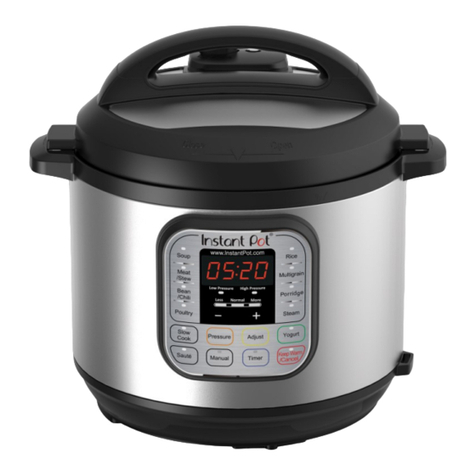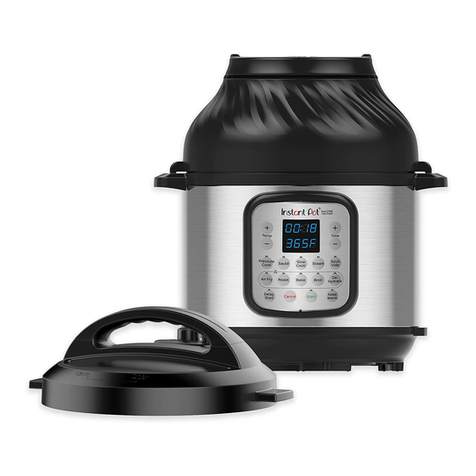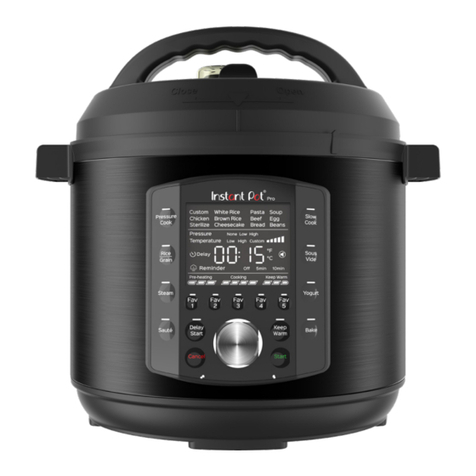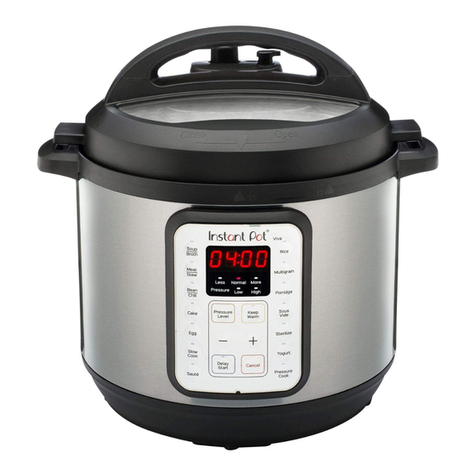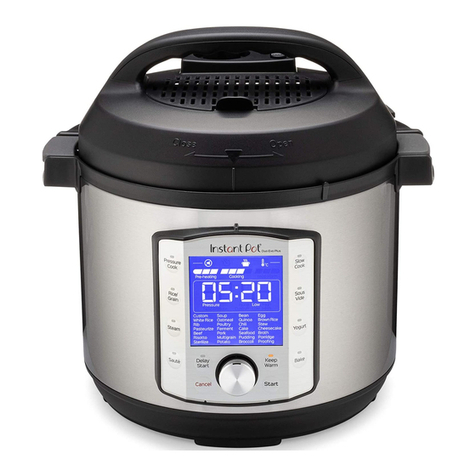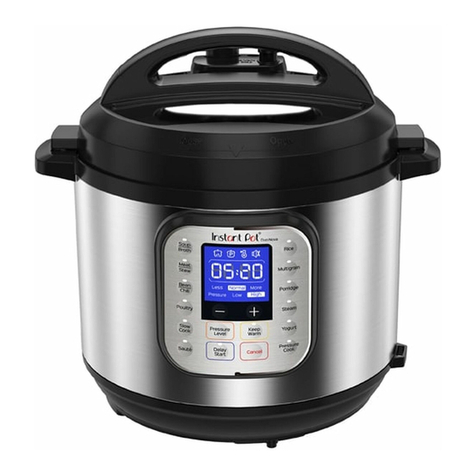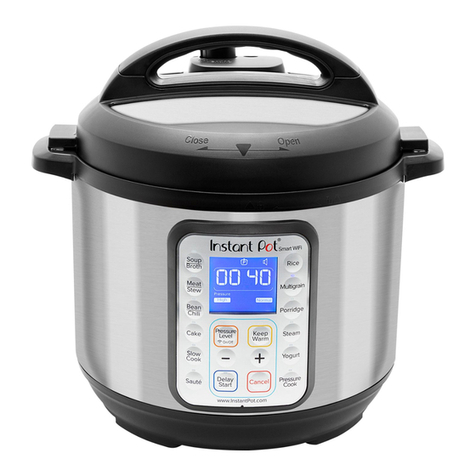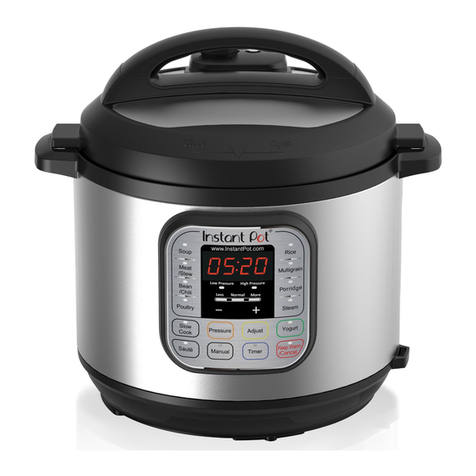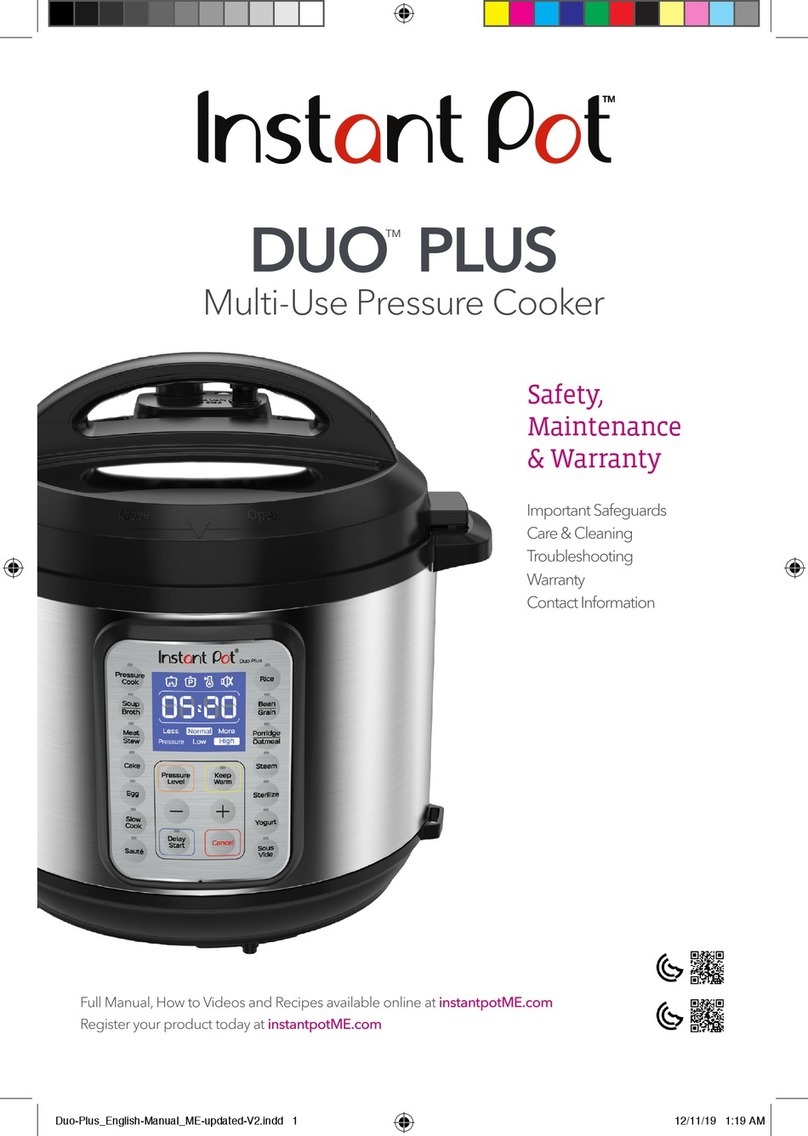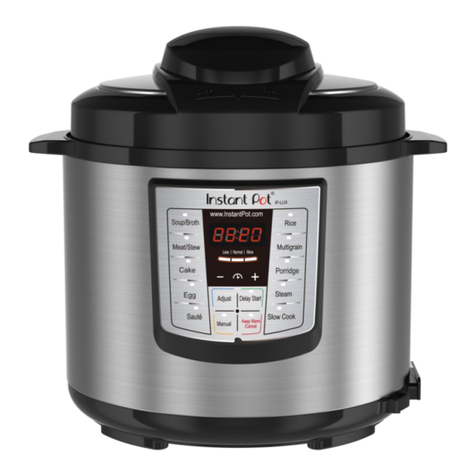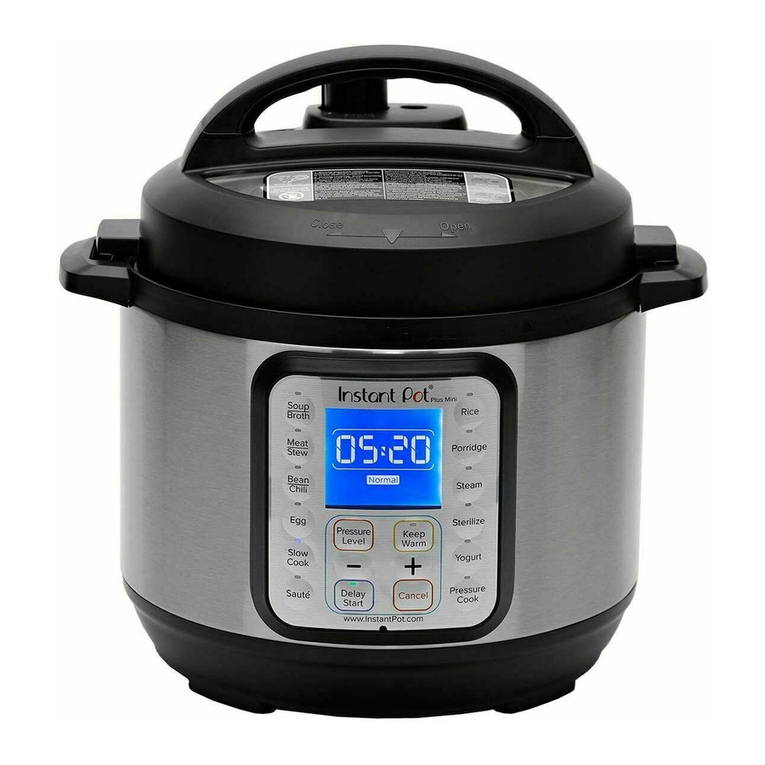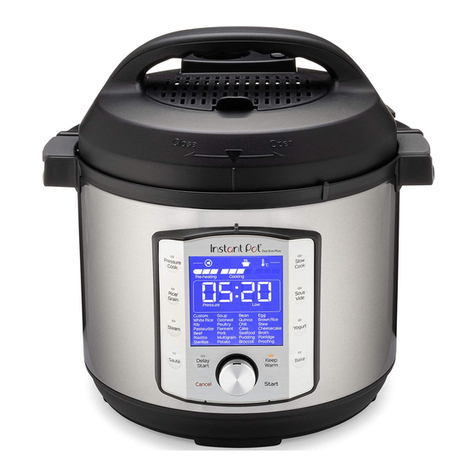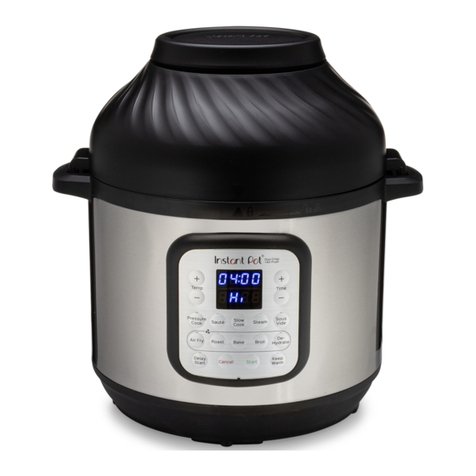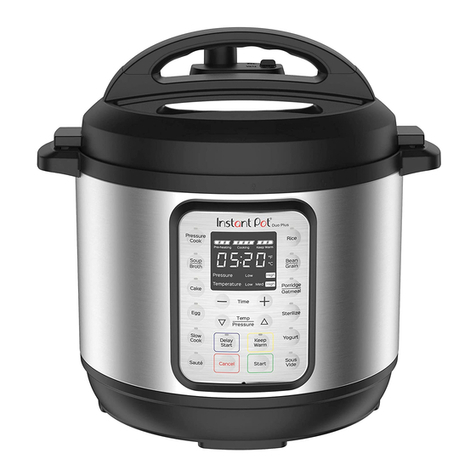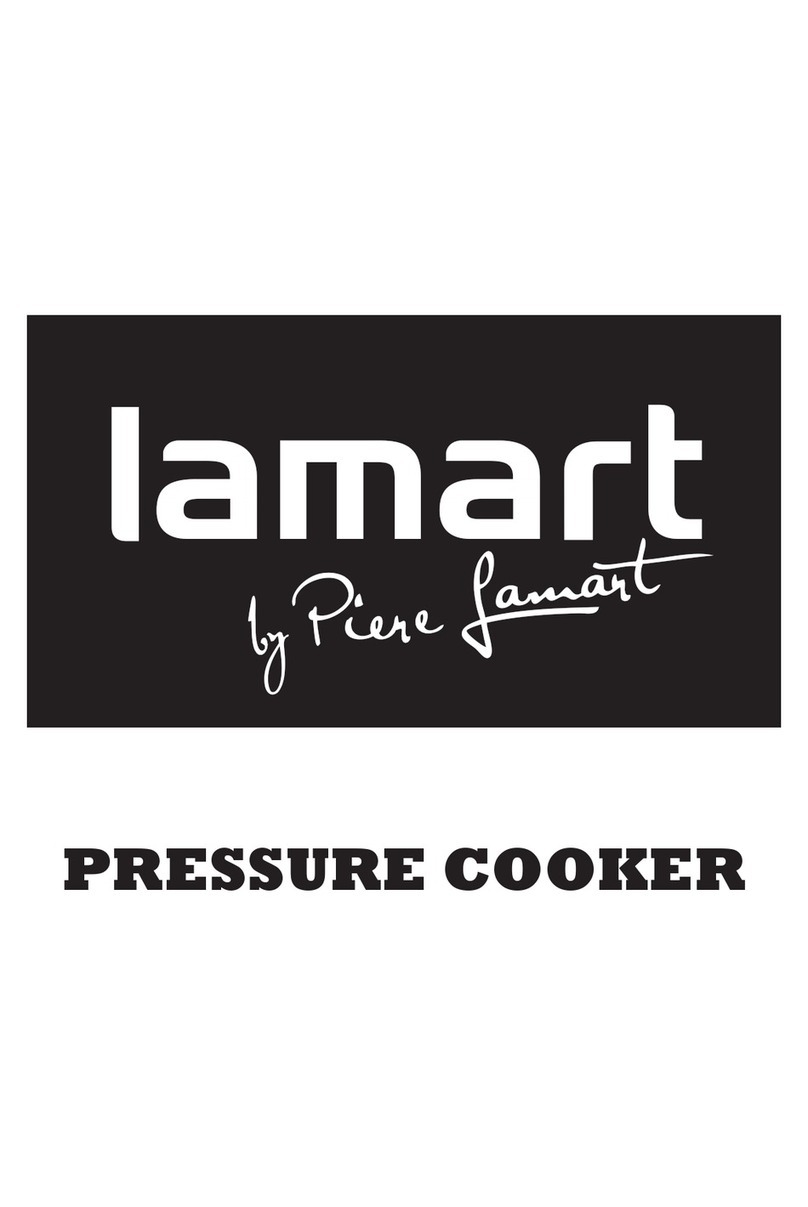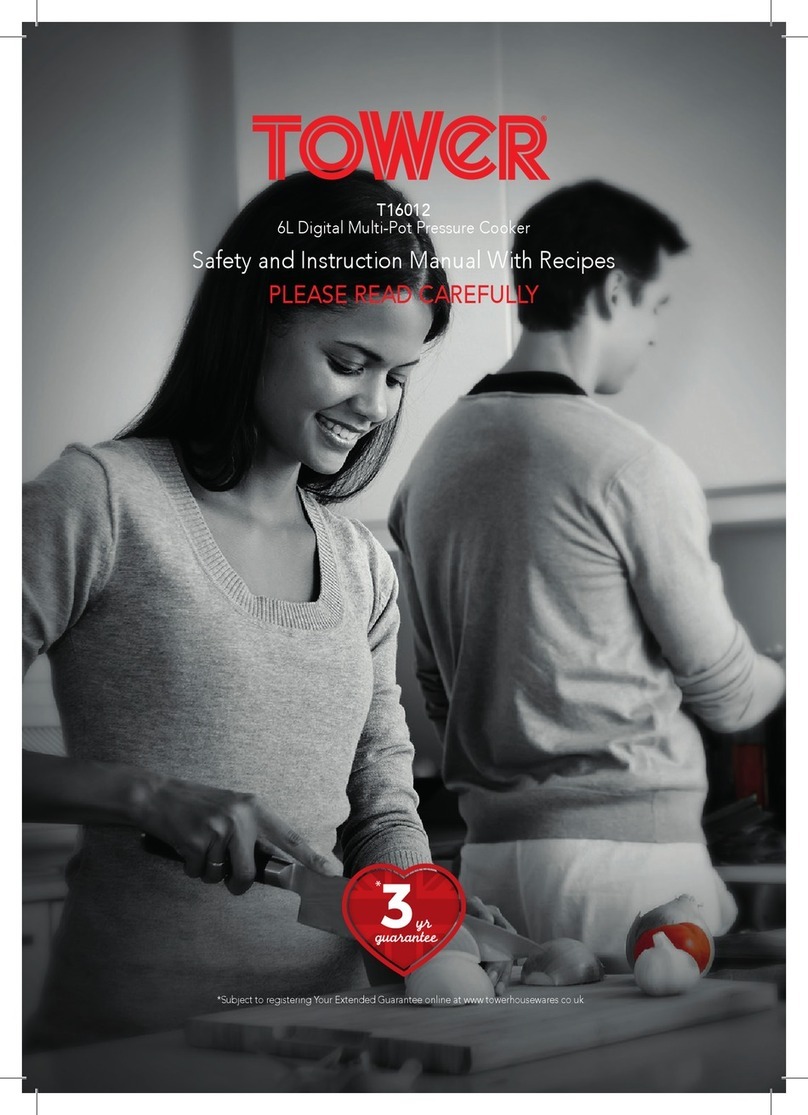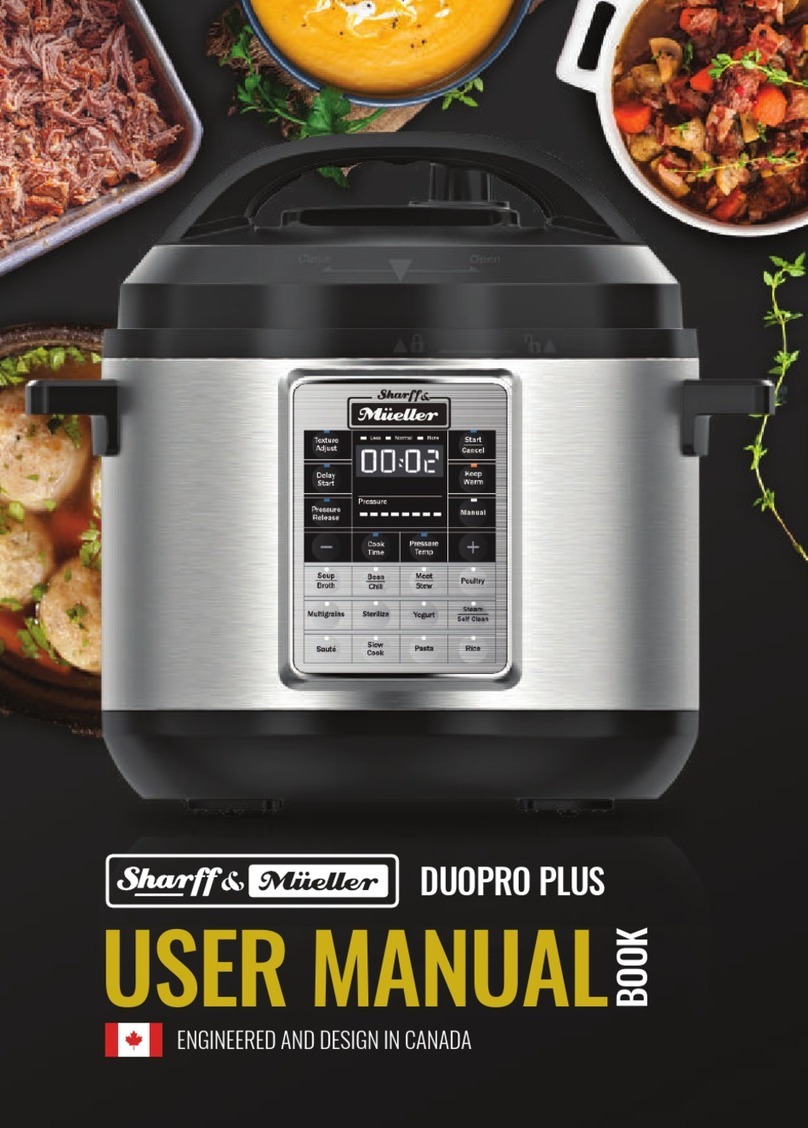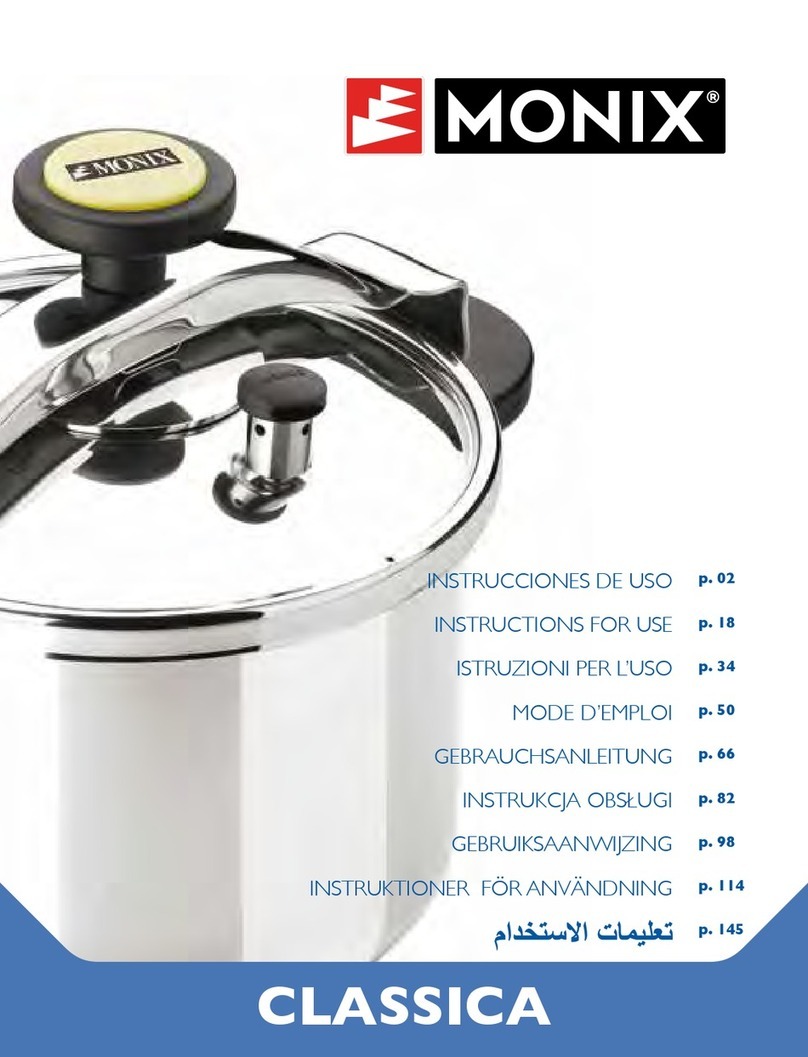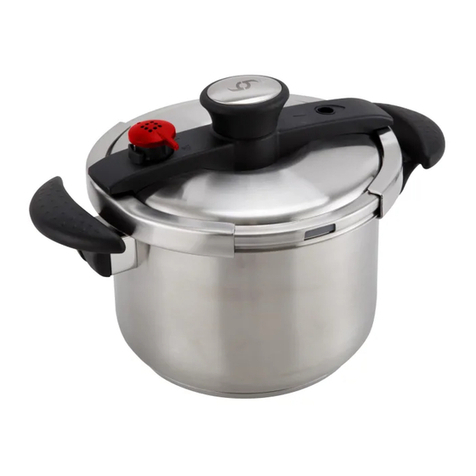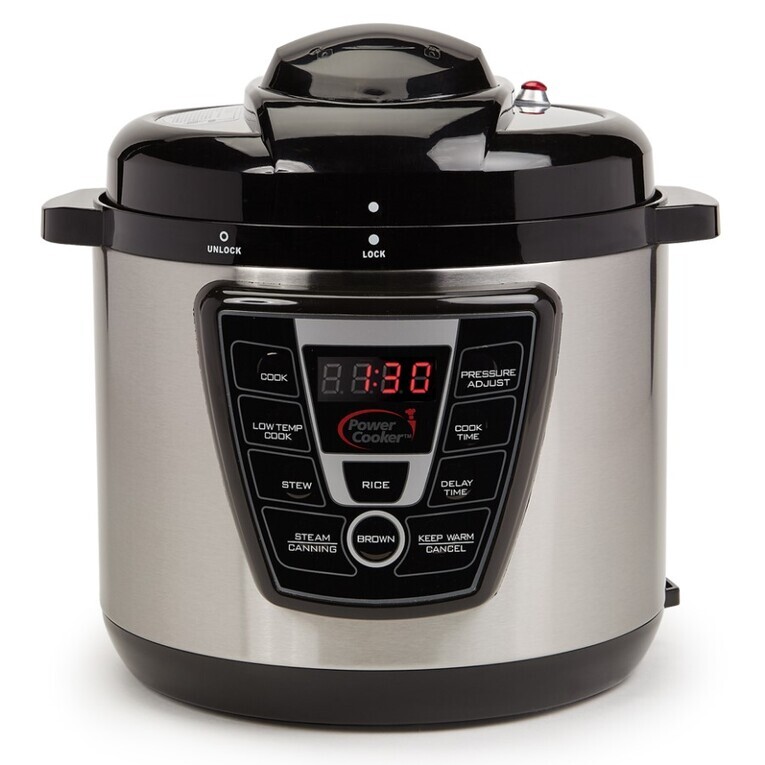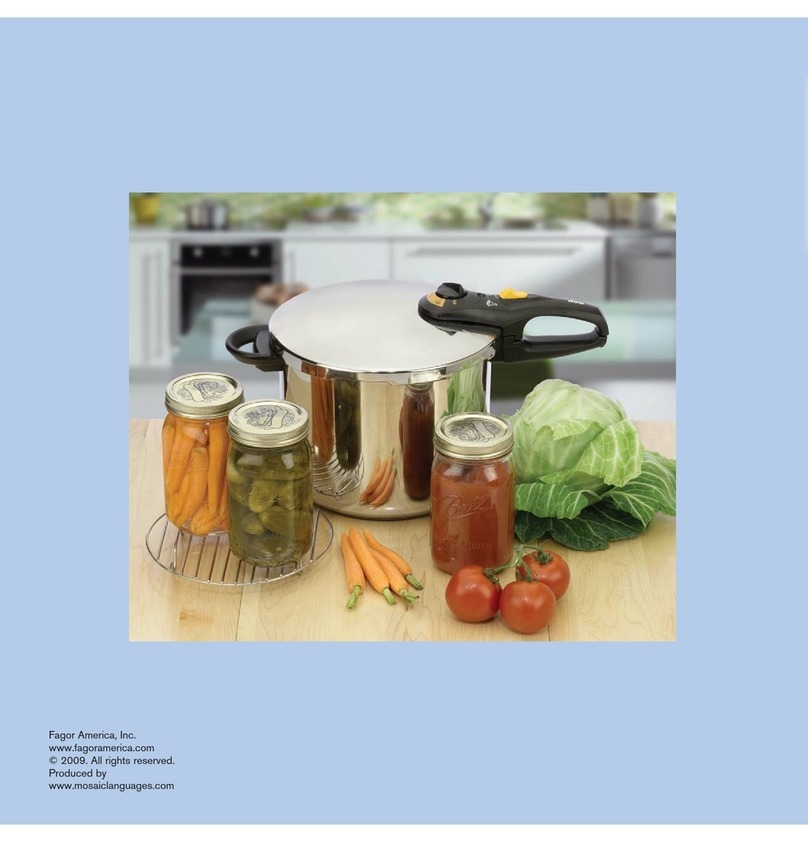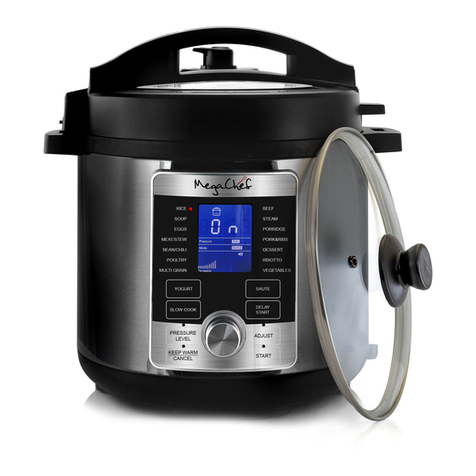
Pressure cooking Pressure cooking
Whether you’re a whiz in the kitchen or a
complete newbie, these Smart Programs
help get you cooking with the touch of
a button.
• Soup/Broth
• Meat/Stew
• Bean/Chili
• Cake
• Egg
• Rice
• Multigrain
• Porridge
• Sterilize
• Pressure
Cook
WARNING
Always cook with the inner pot in
place. Food must be placed in the
inner pot. DO NOT pour food or
liquid into the multicooker base.
To avoid risk of personal injury and/or
property damage, place food and liquid
ingredients in the inner pot, then insert
the inner pot into the multicooker base.
Do not ll inner pot higher than the PC MAX
— 2/3 (Pressure Cooking Maximum) line as
indicated on the inner pot.
When cooking foods that foam or froth
(e.g., applesauce, cranberries or split
peas) or expand (e.g., oats, rice, beans,
pasta) do not ll the inner pot higher than
the —1/2 line as indicated on the inner pot.
CAUTION
Always inspect the lid and inner pot carefully to make sure they are clean and in
good working condition before use.
• To avoid personal injury or damage to the appliance, replace the inner pot if it is
dented, deformed or damaged.
• Use only authorized Instant Pot inner pots made for this model when cooking.
Always make sure the inner pot and heating element are clean and dry before
inserting the inner pot into the multicooker base.
Failure to follow these instructions may damage the multicooker. Replace
damaged parts to ensure safe function.
CAUTION
To avoid scorching or scalding injury, be cautious when cooking with more than
1/4 cup (60 mL / ~2 oz) oil, oil-based sauces, condensed cream-based soups, and
thick sauces. Add suitable liquid to thin sauces. Avoid recipes that call for more
than 1/4 cup (60 mL / ~2 oz) of oil or fat content.
Using pressurized steam guarantees your
dish is cooked evenly and deeply, for the
delicious results you expect every time.
Pressure level Suggested
use Notes
Low Pressure
5.1 - 8 psi
(35 – 55 kPa)
Fish and
seafood,
soft
vegetables
and rice.
The pressure
level
controls the
temperature,
so a higher
pressure
results in
a higher
cooking
temperature.
High Pressure
9.4 - 12.3 psi
(65 – 85 kPa)
Eggs, meat,
poultry, root
vegetables,
oats, beans,
grains,
bone broth,
stew, chili.
To create steam, pressure cooking liquids should be water-based, such as broth, stock, soup
or juice. If using canned, condensed or cream-based soup, add water as directed below.
Instant pot size Minimum liquid for pressure cooking
5.7 Litres / 6 Quarts 1½ cup (375 mL / ~12 oz)
*Unless otherwise specied by your recipe.
Jump start magic!
Stage 1: Setting up the Duo Viva for
pressure cooking
01 Remove the inner pot from the
multicooker base.
Add food and liquid ingredients to the
inner pot, as directed by your recipe.
Use the steam rack to keep foods out of the
cooking liquid. This helps to distribute heat,
prevents nutrients from leeching into the
cooking liquid, and, stops food items from
sticking to the bottom of the inner pot.
Insert the inner pot back into the
multicooker base.
02 Secure the power cord to the base
power socket on the back of the
multicooker base. Make sure the
connection is tight.
Connect the power cord to a 120 V
power source.
The display shows OFF.
03 Place and close the lid as described
in Pressure control features: pressure
cooking lid.
Stage 2: Pressure cooking
01 Select the Smart Program you want
to use.
02 Press the same Smart Program button
again to cycle through the preset time
options in Less, Normal and More.
03 Use the − / + buttons to adjust the
cooking time.
Adjustments are saved to the Smart
Program when cooking begins.
04 Press Pressure Level to toggle
between Low Pressure and High
Pressure.
05 Leave the automatic Keep Warm
setting on, or press Keep Warm
to turn it off.
06 The multicooker beeps after
10 seconds, and the display shows
On while the multicooker preheats.
07 When the Smart Program nishes,
follow your recipe’s directions to select
the appropriate venting method. See
Releasing pressure: Venting methods
for safe venting techniques.
DANGER
DO NOT attempt to remove the lid while the oat valve is up and NEVER
attempt to force the lid open. Contents are under extreme pressure. Float
valve must be down before attempting to remove the lid. Failure to follow these
instructions may result in serious personal injury and/or property damage.




















